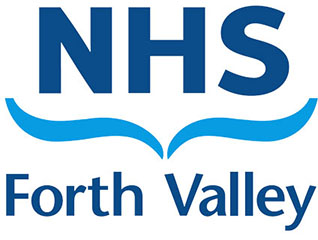Cow’s Milk Allergy can appear in different ways and is suspected if your baby has one or more of the following symptoms:
- Large or frequent vomits (and reflux has been ruled out)
- Loose, frequent stools or constipation
- Unexplained irritability or sore crying for long periods
- Skin rash or eczema
- Problematic wheezing, shortness of breath, nasal congestion
What to Do Now
If you are breastfeeding and your baby is not on solids yet, remove cow’s milk from your diet for 6 weeks to see if there is an improvement in your baby’s symptoms. This must be done strictly, as even small amounts of cow’s milk proteins can travel through breast milk to your baby.
- It takes 10–14 days for all cow’s milk protein to leave your breast milk.
- If possible, express breast milk over the first 3–4 days of starting the milk-free diet and freeze it for a future milk challenge. If you can’t express milk, you can do the milk challenge in other ways (see below).
Foods to Avoid & Foods to Choose
| Food Group | Foods to Choose | Foods to Avoid |
|---|---|---|
| Dairy Products | Milk substitutes (oat, soya, coconut, almond, hazelnut milk), soya milkshakes | Cow’s, goat’s, sheep’s milk and all products made with these |
| Soya yoghurt and desserts, coconut/oat/almond-based yoghurt | Yoghurts and yoghurt smoothies | |
| Soya or coconut-based non-dairy cheese incl. soft spread | Hard, soft and cream cheese (cheddar, mozzarella) | |
| Dairy-free margarine and spread | Butter and margarine | |
| Dairy-free ice-cream, soya/Oatly cream | Ice-cream, cream |
Always check food labels for hidden sources. Food packaging must clearly state if the product contains milk products (milk will be written in bold).
Calcium
When breastfeeding, choose calcium-enriched products as your calcium requirements are high (1250mg per day). Use calcium-enriched milk-free alternatives and include non-dairy sources such as tinned fish (sardines, pilchards), bread, green vegetables, dried fruit (apricots), and tinned beans (baked beans, kidney beans).
| Milk Alternative | Calcium Content (mg) |
|---|---|
| Calcium enriched soya milk (200mls) | 265 |
| Calcium enriched oat milk (200mls) | 240 |
| Calcium enriched almond milk (200mls) | 240 |
| Calcium enriched coconut milk (200mls) | 240 |
| Carton Soya Shake (250mls) | 300 |
| Pot Soya Yoghurt, custard, dessert (125g) | 150 |
If you cannot meet this through your diet, buy an over-the-counter calcium supplement. Speak with your pharmacist for advice. All breastfeeding mums need a vitamin D supplement daily (10µg). Some calcium supplements contain vitamin D, so you can stop your extra vitamin D supplement if the calcium supplement contains 10µg vitamin D.
If Your Baby Has Started Weaning (Solids)
If your baby did not have any symptoms of cow’s milk allergy when only taking breast milk, you do not need to remove cow’s milk from your diet. Remove cow’s milk only from your baby’s diet for 4 weeks.
For information on milk-free weaning, see the milk-free weaning video:
What to Do After the Milk-Free Trial
After your baby has been milk-free for 4 weeks (6 weeks after you start avoiding milk whilst breastfeeding):
- If there is no improvement in symptoms, see the health visitor. You may be advised to return to your normal diet.
- If symptoms worsen, referral to a dietitian may be advised.
- If symptoms improve, do a milk challenge (reintroduce cow’s milk) to confirm the diagnosis of CMPA.
How to Do a Milk Challenge
Do not do a milk challenge at home if your baby has had severe or immediate reactions to milk (anaphylaxis, lip/facial swelling, wheeze).
- After around 6 weeks milk-free, start the milk challenge when symptoms have settled.
- If breastfeeding only (no solids), use frozen breast milk expressed before starting the milk-free diet. Give 30ml (1oz) on day 1, 60ml (2oz) on day 2, increasing daily by 30ml (1oz) until a full bottle is taken daily. If no reaction, reintroduce milk into your diet.
- If no frozen expressed breast milk is available, reintroduce milk into your diet and monitor your baby’s response.
- If your baby has started solids, reintroduce milk into their diet and monitor symptoms over 7 – 10 days.
If no symptoms return, milk allergy can be ruled out. If symptoms return, speak with your health visitor.
If Symptoms Return
If symptoms return, this confirms cow’s milk allergy. Inform your baby’s health visitor for referral to the paediatric dietitian.
Dietitian Input
When milk allergy is confirmed, you will be referred to a paediatric dietitian for further information and advice. Most babies will remain on a milk-free diet until 1 year old or for at least 6 months following diagnosis. You will be offered to attend a milk-free weaning group and receive milk reintroduction advice at the appropriate age.
Please note: We do not endorse any particular brands or products. Also be aware that manufacturers may change their recipes, so its very important that you always check the ingredients list on the product you are using.

